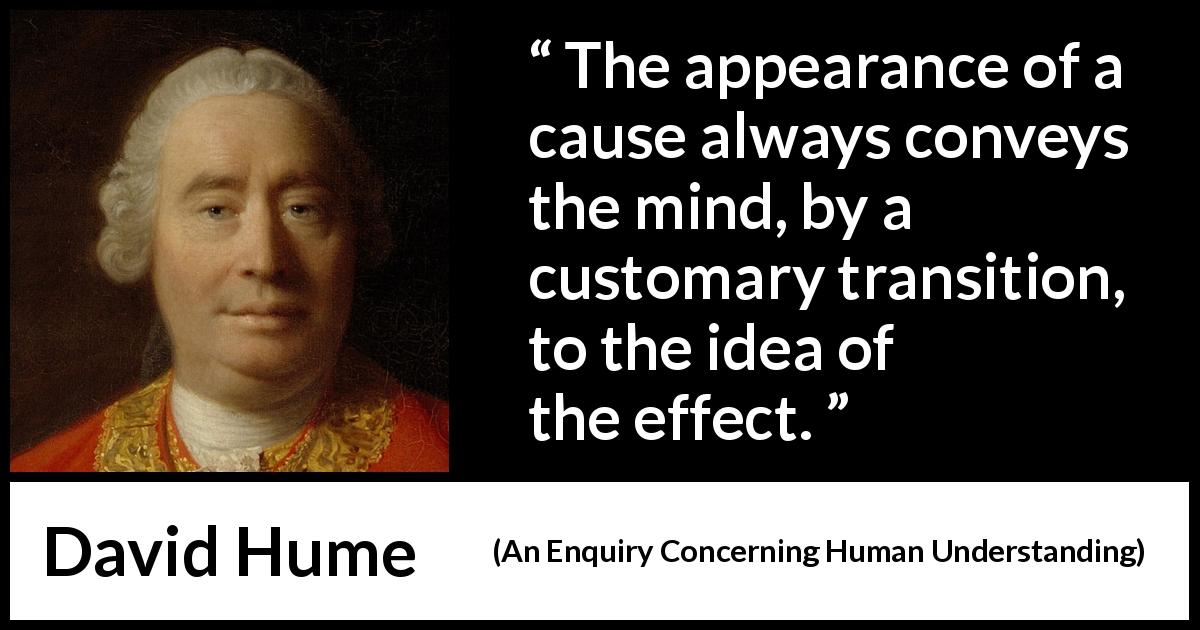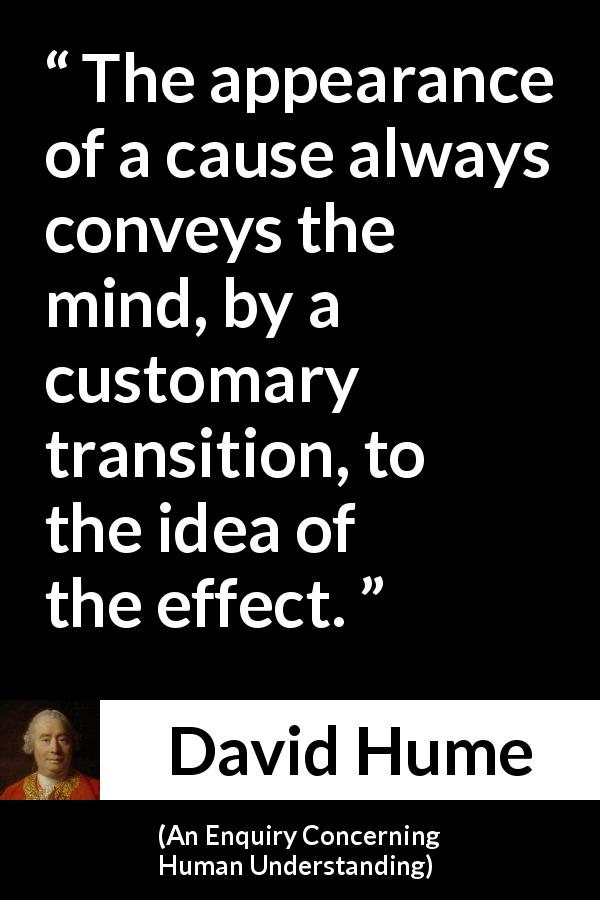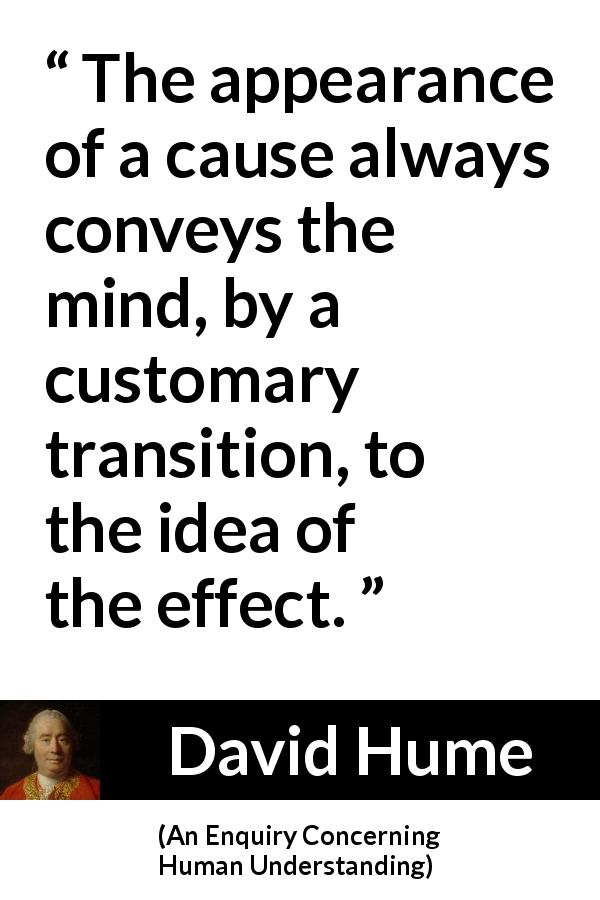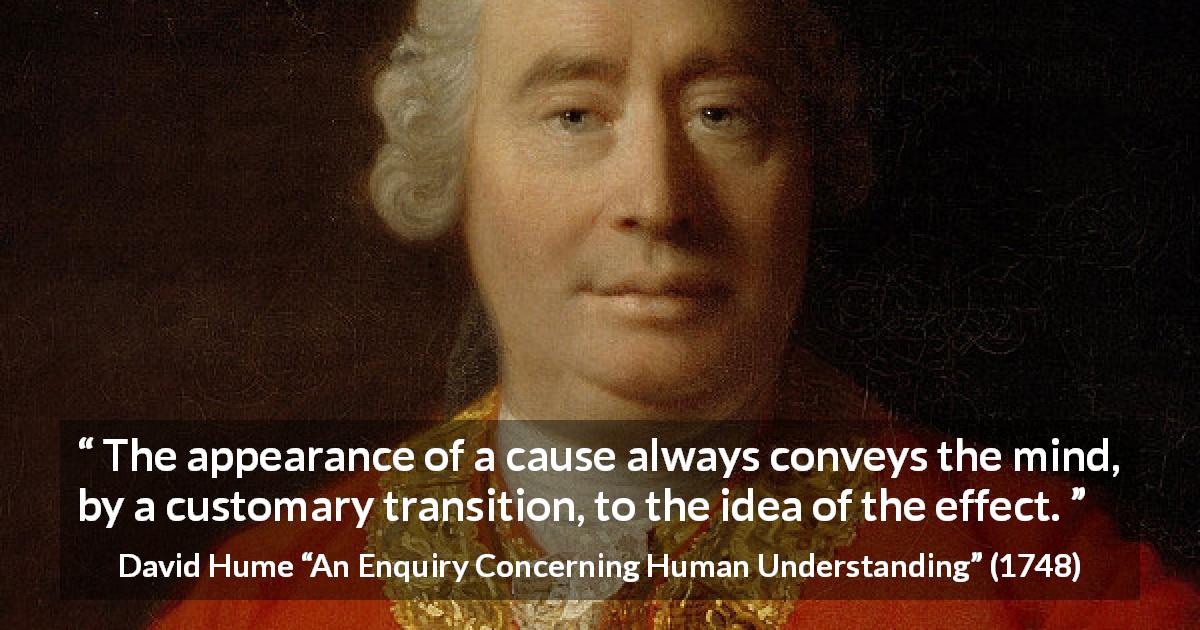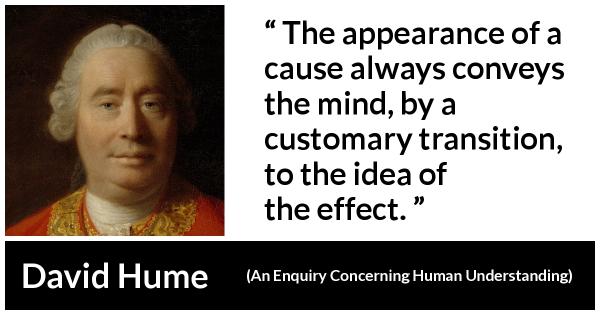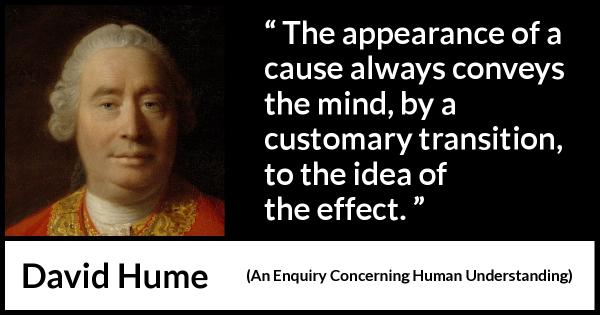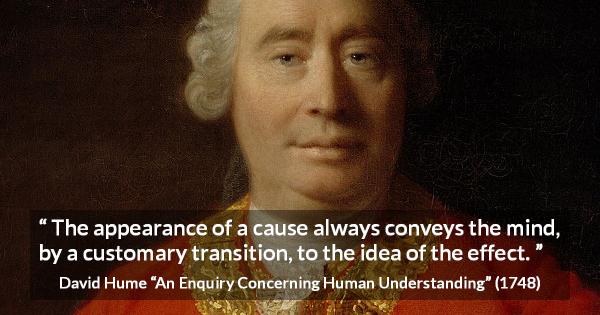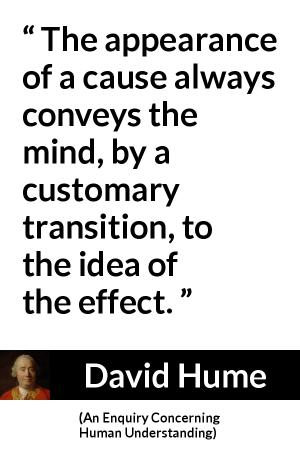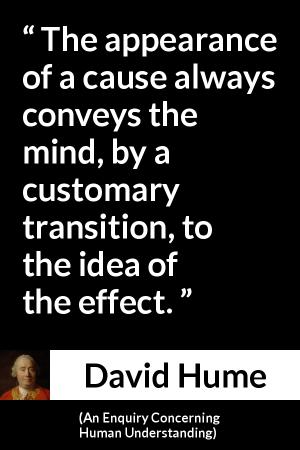“ The appearance of a cause always conveys the mind, by a customary transition, to the idea of the effect. ”
David Hume, An Enquiry Concerning Human Understanding (1748). copy citation
| Author | David Hume |
|---|---|
| Source | An Enquiry Concerning Human Understanding |
| Topic | appearance cause effect |
| Date | 1748 |
| Language | English |
| Reference | |
| Note | |
| Weblink | http://www.gutenberg.org/files/9662/9662-h/9662-h.htm |
Context
“Suitably to this experience, therefore, we may define a cause to be an object, followed by another, and where all the objects similar to the first are followed by objects similar to the second. Or in other words where, if the first object had not been, the second never had existed. The appearance of a cause always conveys the mind, by a customary transition, to the idea of the effect. Of this also we have experience. We may, therefore, suitably to this experience, form another definition of cause, and call it, an object followed by another, and whose appearance always conveys the thought to that other.”
source








